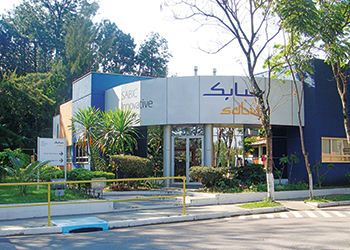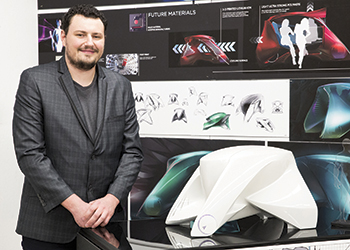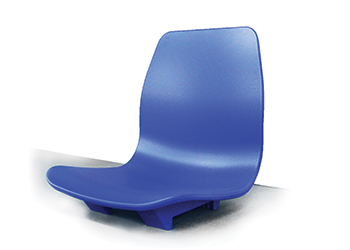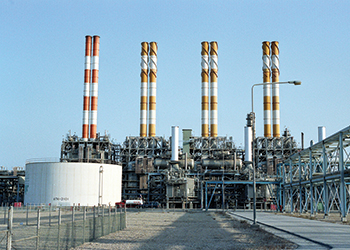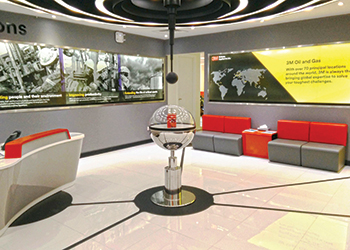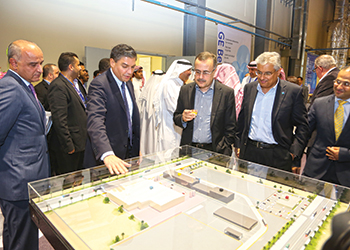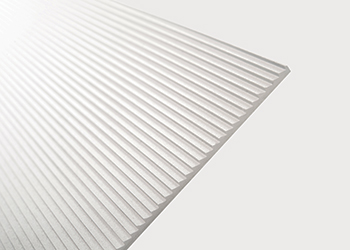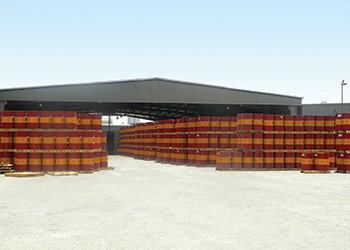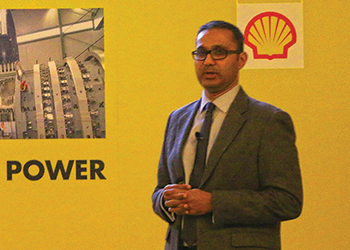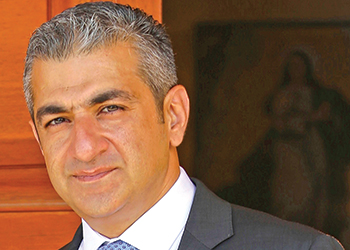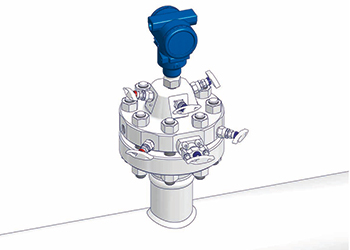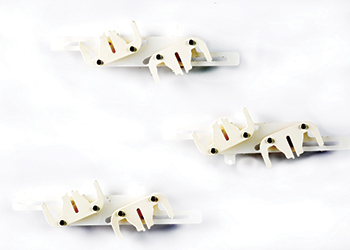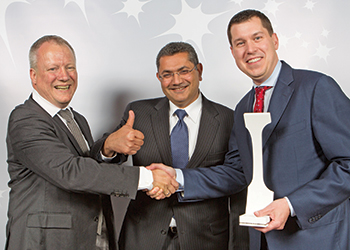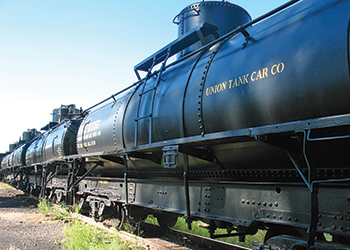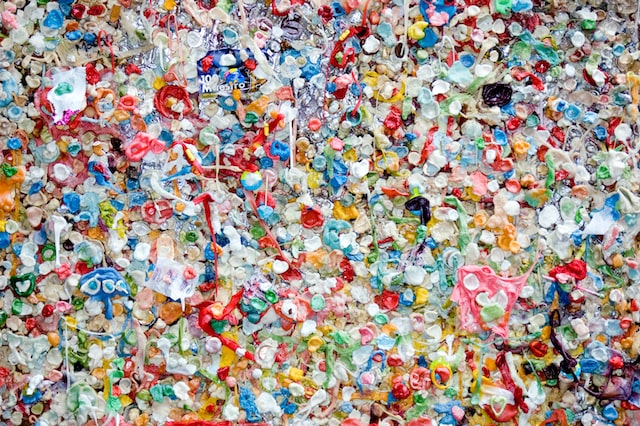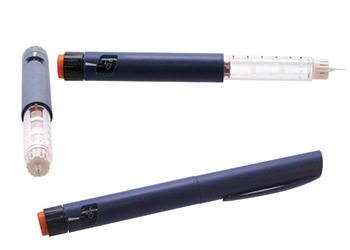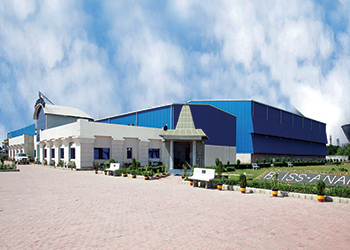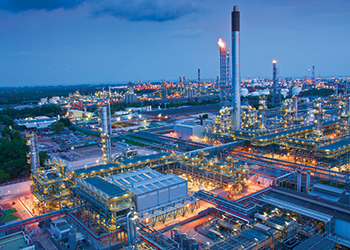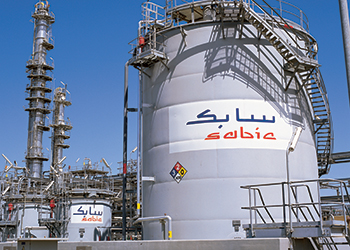
 Sabic ... reorganising
Sabic ... reorganising
Sabic’s planned reorganisation will focus resources more intensively on the needs of each line, enhancing customer intimacy with more focused solutions and helping move Sabic to the next level of portfolio product management
Saudi Basic Industries Corporation (Sabic), one of the world’s largest petrochemical groups, is undertaking a transformation process aimed at creating a more agile, focused and cost-efficient organisation that meets the needs of its customers more effectively. The company’s new organisational structure is expected to be in place by January 1, 2016.
The reorganisation follows a comprehensive review of the challenges Sabic faces in the context of the company’s 2025 strategy – including changes in the market landscape as well as the need to drive technology and innovation. To meet these challenges, the company is optimising its existing portfolio while at the same time investing in the innovations that are required for future growth.
As a result of this optimisation, the commodity products of the Innovative Plastics Strategic Business Unit (SBU) will now be housed in the Chemicals and Polymers SBUs. The remaining Innovative Plastics’ solutions will fall under a newly created SBU called Specialities. This business will serve as the exclusive home for Sabic speciality solutions. Along with the Performance Chemicals SBU, the portfolio of which was reallocated earlier, the Innovative Plastics SBU will cease to exist.
"This reorganisation will focus resources more intensively on the needs of each line, enhancing customer intimacy with more focused solutions provision and helping move Sabic to the next level of portfolio product management", says Yousef Abdullah Al-Benyan, acting vice chairman and CEO of Sabic. "We must ensure that our operating model meshes ever more closely with the needs of our customers".
One of the drivers of this change is the differing technology priorities of commodity and speciality businesses. The future of the commodity line will depend heavily on innovations around advancing feedstock technology. Speciality products face separate technology challenges, including the need to seek out technology acquisitions that will enrich Sabic’s existing portfolio.
"Sabic will be able to leverage common product synergies and drive greater focus on innovation based on what matters most to customers," Mark Williams, Sabic vice president Europe, says.
Positions will be optimised as the company creates a more streamlined, highly effective organisation, creating new opportunities for Sabic employees, but also resulting in a reduction of approximately 140 full-time equivalent (FTE) over the next three years (until end 2017) positions for Europe.
"Sabic is committed to making decisions around staffing quickly, transparently and fairly," Williams says. "Where relevant, employee representative bodies have been informed and consultation requirements are being followed."
"We are confident that these steps will lead to a stronger, more agile, more customer-oriented Sabic, focusing intensively on growth and innovation," Williams says. "We have strong ambitions in terms of growth, market position and innovation. Our global 2025 strategy is to be the preferred world leader in chemicals by delivering ‘Chemistry that Matters’. This includes striving for excellence in areas, such as customer value, environmental protection, health and safety, cost competitiveness and sustainable profit."
 |
Al-Benyan ... leveraging synergies |
Meanwhile, Sabic has a number of projects planned or under way. A $2 billion elastomer project is a JV of Sabic and ExxonMobil Chemical being built at Al Jubail Petrochemical Co (Kemya). The project will produce about 400,000 tonnes per year (tpy) of carbon black, rubber and thermoplastic speciality polymers. ExxonMobil is providing the technology and the products will be sold to local and international markets.
Another project is Sabic’s methyl methacrylate (MMA) venture with Mitsubishi Rayon subsidiary Lucite. The Alpha-2 JV has a 250,000-tpy MMA plant in the kingdom on stream since 2014. About 80 per cent of the MMA is used in construction and automotive industries.
Riyadh is hoping that building downstream facilities will attract global car-makers such as Toyota and General Motors to set up vehicle assembly plant in Saudi Arabia. It is not just Saudi Aramco and Sabic which are developing downstream projects. Many of the kingdom’s private chemical firms are expanding.
Sabic affiliates have raised polyolefin and polymer production, including a propane dehydrogenation (PDH) plant at I billion Zahr, and a polyethylene terephthalate (PET) plant at Sharq. In parallel, Sabic has a 50-50 a JV with Sinopec in China, which has raised the firm’s output by about 3.2 mtpy. Their JV’s $3 billion complex at Tianjin, in north-eastern China, was completed in first week of October 2009. The complex produces basic plastics, including PE and PP; EG used in production of polyester fibres; and butadiene, phenol, and butene, used in production of polycarbonate.
China is an important market for fuels and chemicals, with Saudi Aramco having an integrated refining and olefins complex built at Fujian in a JV involving ExxonMobil and Sinopec. The 160,000 bpd expansion at the Fujian refinery began full operations in late 2009.
The Saudi Arabian General Investment Authority (Sagia) has processed almost $100 billion in investment in the kingdom’s petrochemical industry. This is over a third of the $270 billion for the kingdom’s power generation, petrochemicals and water desalination.
Arabian Petrochemical Co (Petrokemya), 100 per cent owned by Sabic, has the Gulf region’s first acrylonitrile butadiene styrene (ABS) plant built at its Jubail olefins complex, with a capacity of 200,000 tpy on stream since mid-2011. It has a polybutediene plant, a latex unit, a higher rubber graft facility, a styrene acrylonitrile plant and an ABS compounding unit. The technology for this was supplied by Sabic Innovative Plastics, formerly known as GE Plastics, which Sabic acquired in 2007. Butadiene, acrylonitrile and propylene feedstock for the facility are sourced directly from Petrokemya.
Petrokemya went on stream in Jubail in 1985. Its product range and capacities have been expanded since then to include 1.95 mtpy of ethylene; 100,000 tpy of polystyrene; 70,000 tpy of benzene; 70,000 tpy of butadiene; 100,000 tpy of butene-1; and varying quantities of vinyl chloride monomer (VCM) and styrene.
The Phase-5 expansion of Ar-Razi’s methanol complex at Jubail started up in June 2008, making it the world’s largest chemical methanol production facility. The $600 million plant, built by Mitsubishi Heavy Industries (MHI), added 1.7 mtpy of capacity at the complex, bringing its total output to 4.7 mtpy. Set-up in 1979, Ar-Razi is a 50:50 JV of Saudi Methanol Co., a consortium of major Japanese firms led by Mitsubishi Chemical Gas Co, and Sabic which is now the world’s second largest methanol producer. Methanol, often derived from methane, is used to produce other chemicals such as formaldehyde.
All of Sabic’s plants at Jubail and Yanbu’ keep raising capacity or are having their output streams diversified. Their plants are mostly JVs between Sabic and foreign firms. Sabic and partners in Jubail and Yanbu’ produce more than 45 kinds of petrochemicals and other products.
Saudi Petrochemical Co (Sadaf), a Sabic-Shell JV in Jubail, has re-launched its 600,000 tpy styrene plant. The project was postponed in early 2005 because of rising costs. Project costs fell steadily from the autumn of 2008. Sadaf makes over 1 mtpy of styrene. Its products include styrene monomer, ethylene dichloride, caustic soda, ethanol and MTBE. Now Sadaf makes polyurethane building blocks and styrene monomer propylene oxide (SMPO), the first in the Middle East.
 |
Sabic’s technology at work |
Farabi Petrochemicals Co plans to produce a similar mix of chemicals at its proposed complex at Jizan Economic City (JEC) to that of the plant it operates at Jubail. This will be next to the $7 billion Jizan refinery in the south-west of the kingdom. The chemicals mix will concentrate on about two dozen grades of surfactant allied business chemicals. These will include detergents, wetting agents, emulsifiers, foaming agents and dispersants. Farabi is to get the plant’s feedstock from Saudi Arabia.
JEC is set to be the first mover in Saudi Arabia’s plan to integrate its refining operations with large-scale petrochemical production. Three locations have been identified in a new initiative which could result in new petrochemical ventures worth $70 billion. After a series of delays and cost over-runs, the Sabic affiliate Saudi Kayan’s $12 billion petrochemical venture began making profit in 2013, its first since its inception in 2001. Now Kayan operates at full capacity, producing polyethylene (PE), polypropylene (PP) and a number of downstream items.
Sabic affiliate Saudi Arabian Fertilisers Co’s (Safco) 1 mtpy urea plant in Jubail has been producing since 2013. Saipem completed the Safco V plant in the first half of 2014. A $1.1 billion JV plant with Sinopec has been on stream since September 2015.
Owned 70 per cent by the state and 30 per cent by Saudi and other GCC investors, Sabic already is the world’s largest petrochemical company by market value. Before it bought the Dutch firm DSM Petrochemicals in 2002, it was the world’s No 22. The acquisition raised its ethylene output capacity by 1.2 mtpy to 6.9 mtpy and gave it a key to the EU. In 2007, it grew further with an $11.6 billion acquisition of GE Plastics of the US. In September 2011, Sabic’s automotive unit Innovative Plastics bought a stake in Inpro, a German JV which develops innovation in automotive production. Sabic thus joined Daimler, Siemens, ThyssenKrupp and Volkswagen and the German state as equity owners in the group. Saudi Arabia eventually will out-match Sabic in this respect through JVs to include Sabic itself and some of the global car-producing majors.
Innovative Plastics vice president Gregory Adam says: "Through Inpro, Sabic can participate and add value in the early stages of innovation with world-class producers, who continue to develop and create new vehicles and processes that meet the interests of auto-makers and consumers around the world." Inpro’s R&D focus includes development of new production technologies for future electric and hybrid vehicles.
Sabic has since early 2012 been on the look-out for further acquisitions abroad. It still lacks the technology to dominate the market. Acquiring established firms would reverse this situation. Sabic is still a new company, formed just 39 years ago compared with the 147 and 210 years of heritage of its two rivals BASF of Germany and Dupont of the US. This means Sabic is at a disadvantage when it comes to R&D of its own technology against firms with long-established innovation units.
Acquisition of companies with in-house technology, especially in the speciality plastics sector, makes a lot of sense for the chemicals giant. And Sabic has to cope with the new reality of the US petrochemical business now enjoying low feedstock prices thanks to the big rise of shale gas output. There are proposals for Sabic to acquire some of the US-based petrochemical firms in order to improve its position as a global player in this business.
Sabic can produce intermediate chemicals quite cheaply but, until now, the kingdom’s under-developed conversion industries sector means most of the value chain is lost to exports. Using in-house technology to manufacture products will ensure profits from lengthening the chemicals value chain stay in Saudi Arabia. In its quest to become the leading chemicals company. Sabic has one weak link and that is technology. An acquisition to fix that problem makes a lot of sense. This is Saudi Arabia’s goal as well.
Sabic has been one of the Middle East’s major success stories since it was formed in 1976. Unlike its competitors, however, Sabic has an added responsibility to back Riyadh’s bid to heavily industrialise the Saudi economy. So in this respect, it is as committed as Saudi Arabia to keep advancing in the field of R&D. Sabic and Saudi Arabia thus can juggle their commitment to the kingdom, while driving global expansions with the aim to become among the largest integrated chemicals companies in the world in the next decades.



































































